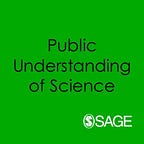Finding the Mother Tree: Uncovering the Wisdom and Intelligence of the Forest
Review by Clare Fieseler
Simard spares no technical detail to explain to the reader exactly how she made her discoveries, one experimental forest plot at a time, positioning herself on the defensive against predominantly male critics.
Trees talk. They connect and cooperate underground. Remove this cooperative network, with its matriarchal trees, and the health of an entire forest declines.
These are mind-blowing revelations for most public audiences. However, some indigenous groups passed down this forest wisdom for millennia. Only in the past dozen years have these principles been accepted by western science.
Suzanne Simard, professor of forest ecology at the University of British Columbia, is widely credited as the person who effectively and defensibly aligned western thinking with aboriginal wisdom about forest complexity and interspecies cooperation. She used her fluencies in both modern science and public communication.
In her 30s and 40s, Simard used experimental design, mass spectrometers and the peer-review process. In her 50s, she took to the internet; her 2006 TED talk, How trees talk to each other, has over five million YouTube views.
Donning a loose-fitting sapphire silk top and calm cadence, Simard describes a forest’s root networking as “a sort of intelligence”, offering digital viewers an entirely new way to envision forests. The old vision is that forests are structured by competition for resources, like light, water and space. But Simard’s vision is the opposite: cooperation and the sharing of resources are what structure the density, diversity and complexity of forests.
Having published her discoveries via elite scientific journals and popular streaming channels, what more could be achieved with a memoir? In this book, Simard uses the format to reveal the uncomfortable slowness with which scientific thought around the western “seeing” of a forest has shifted. Before gaining a wide digital audience and multiple career awards, Simard’s early scientific progress toward this vision was met with raised eyebrows by most other scientists and forest managers.
Simard spares no technical detail to explain to the reader exactly how she made her discoveries, one experimental forest plot at a time, positioning herself on the defensive against predominantly male critics. Through richly detailed scenes, like scientific conference halls filled with “dismissiveness” and demeaning remarks at the water cooler of a Canadian forest service office, Simard describes how her evidence-based findings and interpretations went ignored. She implies throughout the book that her young age and gender motivated these slights.
Scholars preoccupied by notions of “scientific revolutions” often debate the stuck-ness of existing epistemologies, as opposed to social factors like gender or race, as determinants of how or why scientific thought about the natural world shifts. But Simard’s memoir convincingly argues that dominant epistemologies in science — or at least, forest science — cannot be untangled from social themes like gender.
Simard describes her personal journey and the realisation that her lived experiences as a mother of two boys were reflected in many aspects of forest life. Not only does she see cooperation as the foundational relationship between tree species, but her research shows that cooperation is made intergenerational by certain long-lived trees that serve as key life-givers, the Mother Trees within the forest network.
Simard writes: “When Mother Trees — the majestic hubs at the center of forest communication, protection and sentience — die, they pass their wisdom to their kin, generation after generation, sharing the knowledge of what helps and what harms, who is friend or foe, and how to adapt and survive in an ever-changing landscape. It’s what all parents do.” In this way, clear-cutting forest stands removes not just the connective tissue of the forest but also the wisdom accrued by generations of connection, cooperation, and familial care.
Simard spells out the importance of her research for transitioning away from clear-cut forest practice and embracing an approach with deeper “Aboriginal roots”. The ability to talk clearly about societal implications is, according to The New York Times review of her book, rare and refreshing — “an important next step often lacking in the work of other scientists who try to share their ideas with a wider public”.
Equally refreshing, but largely ignored by the book’s reviews in mainstream news media, is Simard’s attention to the societal implications of the longevity of old scientific epistemologies. If we believe her claim that old epistemologies remained influential long after the evidentiary foundations had been chipped away, then the ongoing clear-cutting of Mother Trees is a physical casualty of the unnecessary persistence of old paradigms.
Simard interacts with individual trees in ways that only a scientist’s memoir can accommodate, writing “I whispered the tree thanks for showing me some of its secrets… Then I made it a promise”. She delivers emotional depth when contemplating the clear-cutting collateral wrought by years of drawn-out rejection of this new way of seeing and harvesting a forest.
Simard’s unabashed emotional connection to individual trees is reminiscent of another female scientist, Dr. Jane Goodall, who upon recognising the emotional complexity of chimpanzees, gave names, like David Greybeard, to ones that she studied. In the mid- 20th century, Goodall’s naming and connecting with non-human persons was considered “unscientific” because it lacked the objective restraint of scientists’ eye.
Simard does for forests what Goodall did for chimps: both women urge the public to see non-humans in new ways, while illuminating the very human ways that scientists often resist new visions for nature even in the face of evidence.
Clare Fieseler is an ecologist and the Justice Sandra Day O’Connor Fellow at the Smithsonian Institution where she studies conservation biology and science diplomacy. Her book, No Boundaries: 25 Women Explorers and Scientists Share Adventures, Inspiration, and Advice, will be published by National Geographic Books in early 2022.
